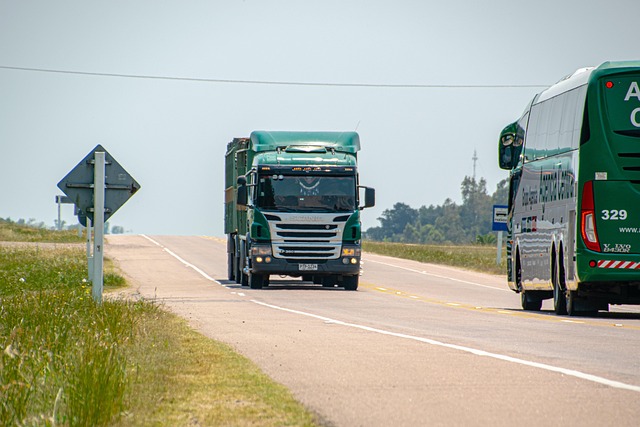Looking to register your car in California? This comprehensive guide walks you through the entire process, ensuring a smooth experience. From understanding key requirements and gathering essential documents to completing the online registration and securing your license plate, we’ve got you covered. Don’t skip the crucial DMV VIN verification step—it’s integral to the registration process. Follow these steps precisely, and you’ll be legal on California’s roads in no time.
- Understand California Vehicle Registration Requirements
- Gather Necessary Documents for Car Registration
- Visit Your Local DMV for VIN Verification
- Complete Online Car Registration Process
- Pay Registration Fees and Obtain License Plate
Understand California Vehicle Registration Requirements

Before registering your car in California, it’s crucial to understand the state’s specific requirements for vehicle registration. The California Department of Motor Vehicles (DMV) mandates that all vehicles operated within the state must be properly registered and have passed a safety inspection. This involves verifying the Vehicle Identification Number (VIN) to ensure the vehicle’s authenticity and history. A key part of this process is the DMV’s VIN verification, which checks for any discrepancies or reported issues with the car.
In addition to the standard requirements, California offers options like mobile VIN verification through a certified mobile vin verifier. This service allows you to get your vehicle inspected conveniently at your location, saving time and effort. A vin inspection ensures that your car meets all safety standards before registration, making it a vital step in the process.
Gather Necessary Documents for Car Registration

Before you begin the car registration process in California, it’s crucial to gather all the necessary documents. This includes your vehicle’s Registration Application (form DV305), which can be obtained from the California Department of Motor Vehicles (DMV). Additionally, you’ll need proof of insurance, a valid driver’s license, and the Vehicle Identification Number (VIN) verification report from a DMV-approved inspection station or through a mobile VIN inspection service.
The VIN is a unique code that identifies your vehicle and is typically located on the dashboard near the driver’s side door or on the engine block. Ensure this number is accurate for both the registration application and the official DMV records, as it’s essential for tracking and verifying your car’s history. For added convenience, many mobile vin inspection services can perform a quick and reliable VIN verification, making it easier to navigate the registration process without unnecessary delays.
Visit Your Local DMV for VIN Verification

When preparing to register your car in California, one crucial step is visiting your local DMV for VIN (Vehicle Identification Number) verification. This process ensures that your vehicle meets all safety and emissions standards before it can be legally registered. The DMV will inspect your car’s VIN to confirm its authenticity and ensure it matches the records on file.
A mobile vin verification service, which offers an alternative to a traditional in-person visit, can also be considered. These services send a specialist to your location for a convenient and efficient vin inspection. This option is particularly appealing if you have a busy schedule or prefer not to spend time waiting at the DMV. Alternatively, some companies provide mobile vin verifiers that can perform this check on your behalf, saving you both time and effort.
Complete Online Car Registration Process

Registering a car in California has become easier with the option to complete the process online. The first step is to gather all the necessary documents, such as proof of ownership, vehicle identification number (VIN), and proof of insurance. Once you have these, you can initiate the registration through the California Department of Motor Vehicles’ (DMV) website.
The online system will guide you through a series of steps, including the renowned DMV VIN verification process, which ensures the authenticity of your vehicle’s information. You’ll input the VIN, typically found on the vehicle’s title or in its engine compartment, to begin this inspection. For convenience, some services even offer mobile VIN inspection options, allowing for a smoother and potentially faster registration experience.
Pay Registration Fees and Obtain License Plate

After completing your vehicle’s registration application at the California DMV, it’s time to pay the registration fees. These fees vary based on your vehicle type and other factors, so be sure to check the official DMV website or consult a representative for accurate information. Once the fees are paid, you’ll receive a temporary registration permit along with instructions to schedule a vehicle inspection, which includes a DMV VIN verification to ensure the vehicle’s identity.
The next step involves obtaining license plates. You can choose between standard tags and specialized ones like custom designs or disabled person plates. After selecting your preferred option, allow some time for the physical plates to be printed and delivered to you. Some residents opt for a mobile VIN verifier service to streamline the process, as this allows for on-site vin inspection and immediate plate issuance.
Registering a car in California involves several straightforward steps. By understanding the state’s requirements, gathering the necessary documents, undergoing DMV VIN verification, completing the online registration process, and paying the required fees, you can ensure your vehicle is legally registered and ready to hit the roads. This process not only complies with state regulations but also helps maintain a smooth and efficient transportation system for all California residents.
